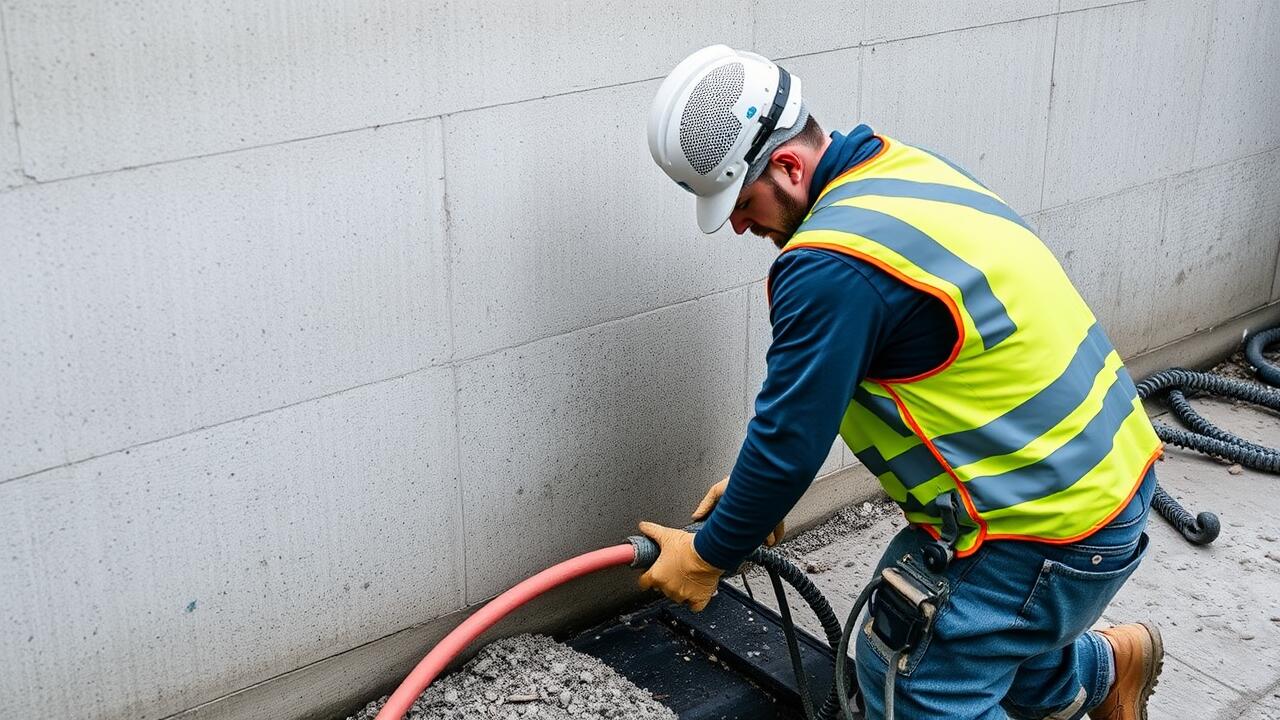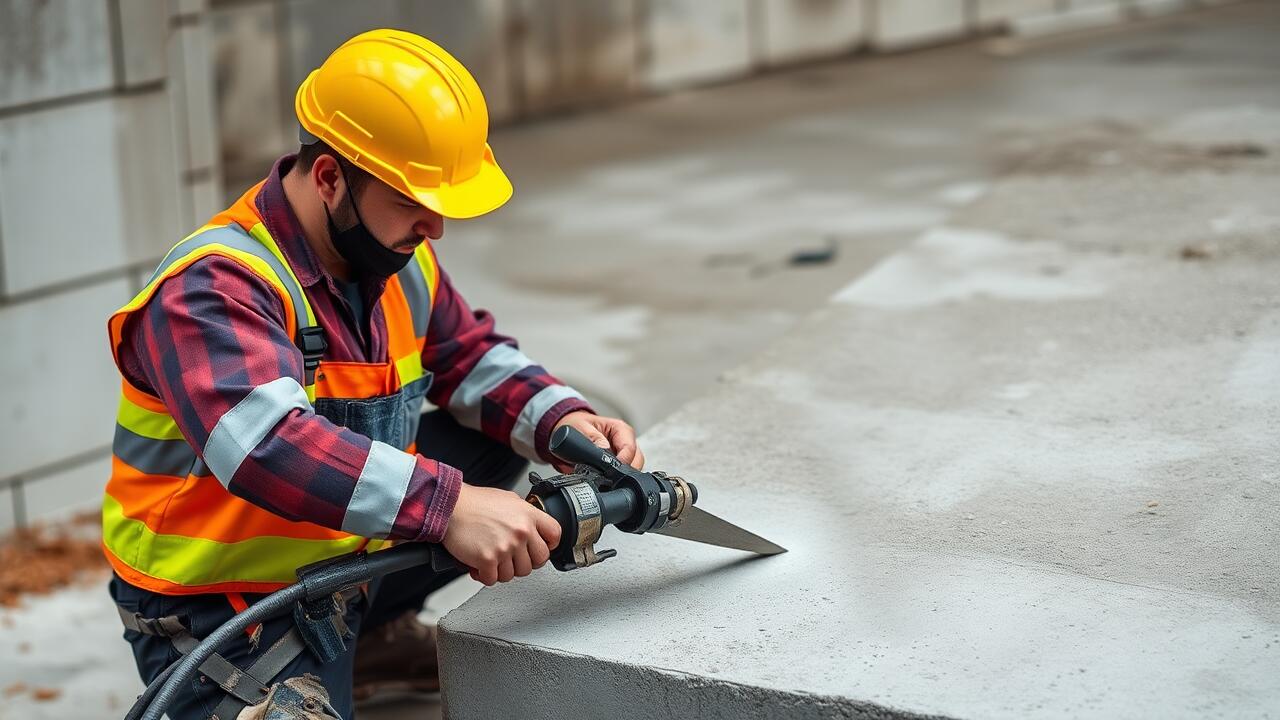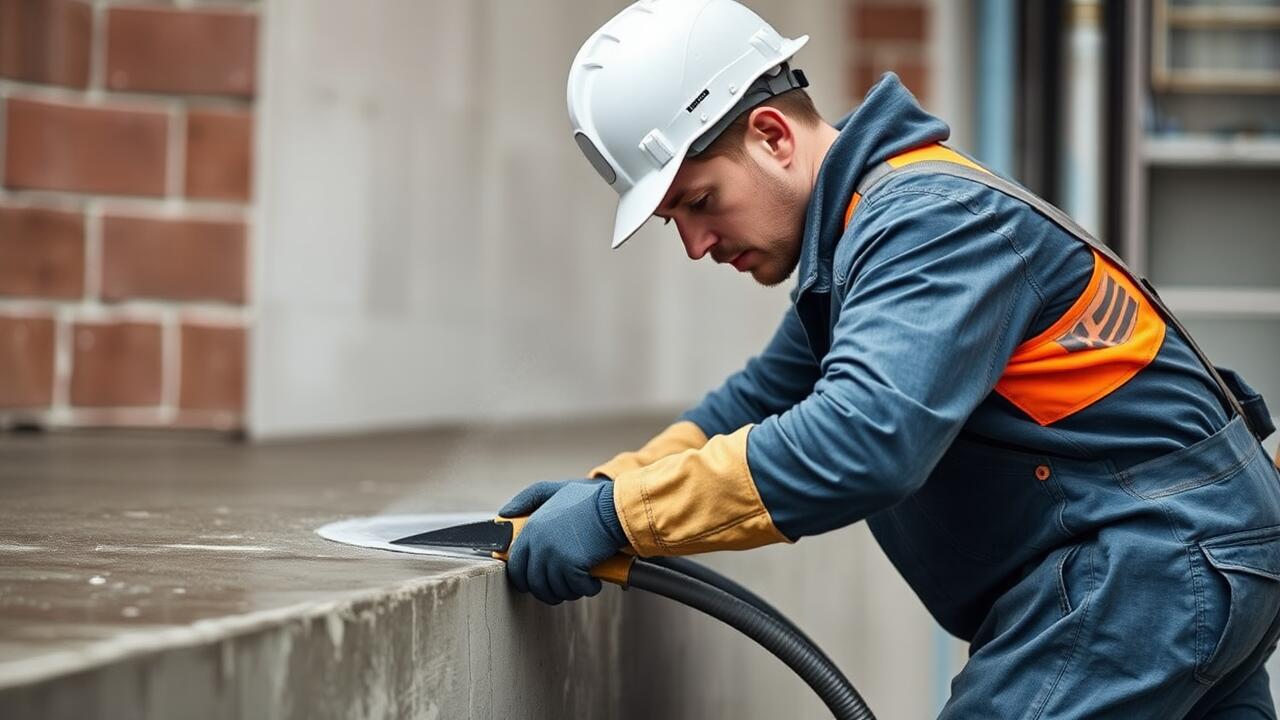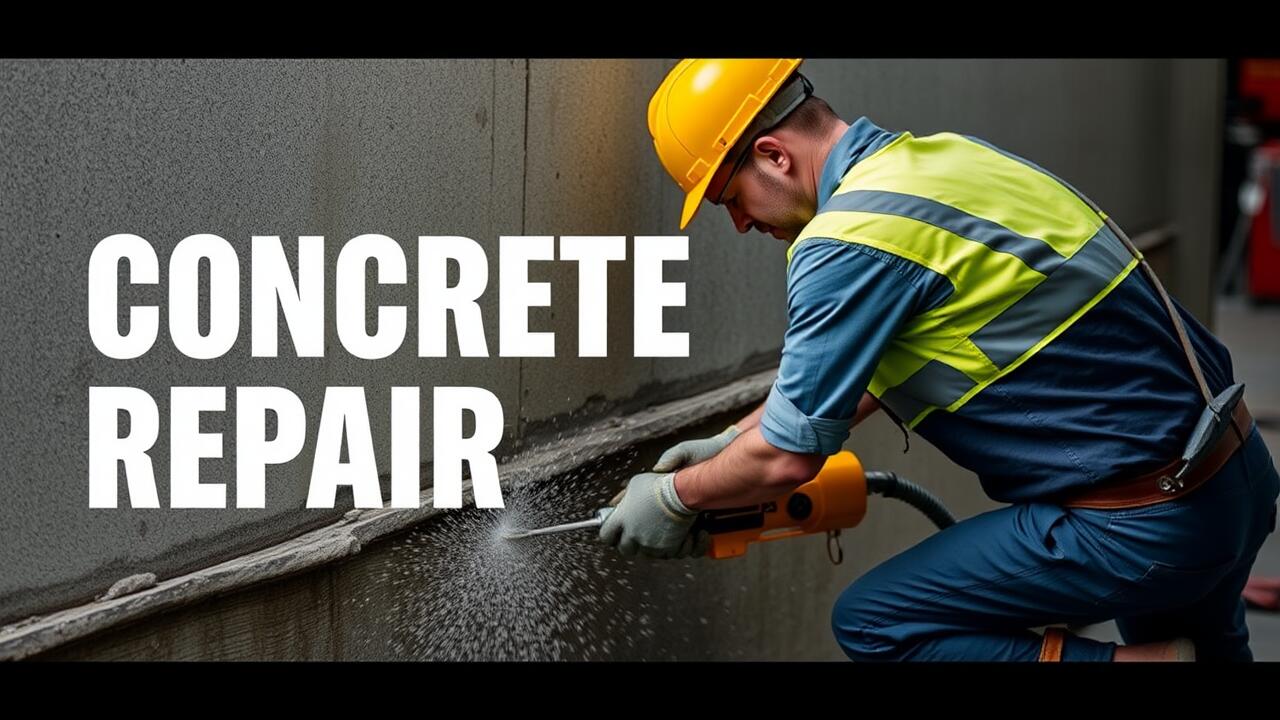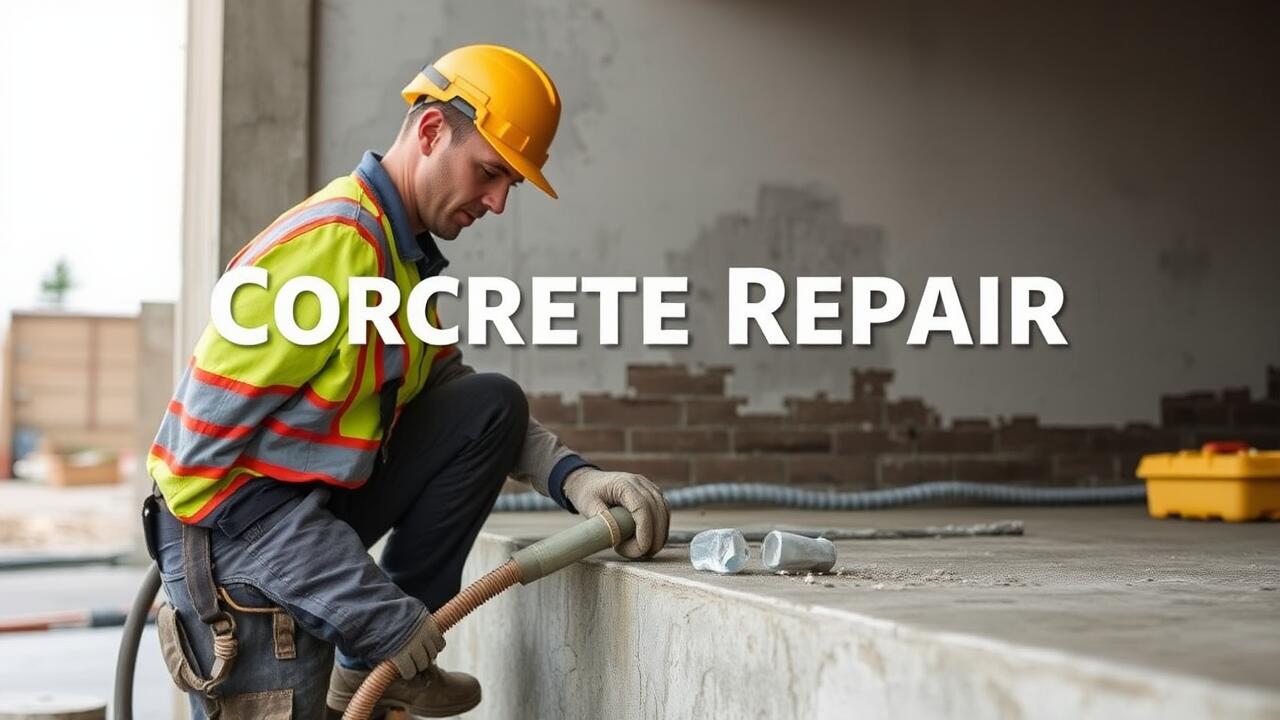
Surface Preparation Before Injection
Surface preparation is critical for effective epoxy injection into concrete cracks. Properly approaching the surface ensures a strong bond between the epoxy resin and the surrounding concrete. Initially, any debris, dirt, or loose particles must be thoroughly removed. Tools such as wire brushes or pressure washers can effectively clean the area. Additionally, the surface should be assessed for any moisture issues. If water is present, it can hinder the epoxy's ability to adhere, leading to long-term repair failures.
After cleaning, drying the surface is essential before proceeding with the injection process. This step ensures that the epoxy can fill the cracks effectively without being compromised by moisture. A moisture meter can help determine if the surface is adequately dry. For those seeking professional assistance, searching for “Concrete Repair near me” can lead to experts who will ensure the right techniques are employed for optimal results. Taking these preparatory steps can significantly enhance the success rate of epoxy injections in concrete.
Importance of Cleaning and Drying Surfaces
Proper cleaning and drying of surfaces is essential before any epoxy injection process. Contaminants like dirt, dust, oil, and grease can interfere with the adhesion of the epoxy. A clean surface ensures that the epoxy can penetrate the crack effectively, leading to a more durable repair. Additionally, moisture in the crack can adversely affect the curing process, resulting in weakened bonds and potential failure of the repair.
For those seeking solutions, searching for “Concrete Repair near me” often leads to professionals who emphasize this step in their procedures. They understand that thorough preparation can greatly influence the overall success of the repair. Techniques such as pressure washing or sandblasting might be employed to ensure surfaces are adequately cleaned. Drying is equally important; moisture removal can be achieved using various methods to create the optimal environment for epoxy injection.
Common Mistakes to Avoid
One of the most common mistakes in epoxy injection is neglecting proper surface preparation. Insufficient cleaning of the crack can lead to inadequate bonding between the epoxy and the concrete. Dust, grease, or any other contaminants on the surface may prevent the epoxy from penetrating effectively, reducing the overall strength of the repair. Therefore, it is crucial to follow thorough cleaning procedures before proceeding with the injection process.
Another frequent pitfall occurs when users underestimate the importance of curing time. Rushing the application or tacking the injected epoxy too soon can compromise its effectiveness. Patience is essential to ensure that the epoxy fully sets and bonds with the concrete. For those seeking professional assistance, searching online for "Concrete Repair near me" can yield local experts who understand these nuances and can help avoid such mistakes.
Pitfalls in Epoxy Injection Techniques
Many individuals underestimate the importance of precise injection techniques during epoxy crack repair. Inadequate pressure or inconsistent application can lead to improper bonding, allowing moisture to penetrate and compromising the structural integrity of the concrete. Adjustments in technique might be necessary depending on the type and width of the crack, yet failing to adapt can worsen the damage. Exploring options for professional help, like searching for "Concrete Repair near me," can guide you toward experienced contractors who avoid these pitfalls.
Another common issue arises from neglecting the pot life of the epoxy resin. Each product has a specific time frame during which it remains workable; exceeding this limit can lead to incomplete curing and adhesive failure. This mistake can significantly diminish the longevity and effectiveness of the repair job. Homeowners should always read manufacturer instructions carefully and plan accordingly, considering local resources for expert assistance, especially if they seek reliable "Concrete Repair near me" services.
Safety Precautions
Safety is paramount when working with epoxy resins. Always wear appropriate personal protective equipment, including gloves, goggles, and a respirator. These materials can release harmful fumes that may irritate the respiratory system. Ensure proper ventilation in the workspace to minimize exposure. Secure your work area to prevent accidental spills and ensure that any tools or materials are safely stored when not in use.
It’s crucial to familiarize yourself with the specific safety data sheets provided by the epoxy manufacturer. This information contains essential instructions for the safe handling and disposal of the materials. If you are uncertain about any procedures, consider seeking professional assistance. For those not comfortable with DIY approaches, searching for “Concrete Repair near me” can connect you with experienced contractors who can handle epoxy injection safely and effectively.
Best Practices for Handling Epoxy Resins
When handling epoxy resins, it is essential to work in a well-ventilated area to minimize exposure to fumes. Personal protective equipment, such as gloves, goggles, and a mask, should be worn to prevent skin contact and inhalation of hazardous materials. Maintaining a clean workspace helps reduce the risk of contamination. As epoxy can bond to surfaces, ensure that tools and mixing containers are clean before use. Dispose of any waste according to local regulations to promote safety and environmental responsibility.
Prior to beginning a project, familiarize yourself with the manufacturer's instructions regarding mixing and application times. Following these guidelines can help achieve optimal results and prevent unwanted curing issues. If you're considering professional assistance for your epoxy injection needs, searching for "Concrete Repair near me" can connect you with experienced contractors who can provide expertise in effective and safe repair techniques. Always prioritize quality over speed when working with epoxy to ensure a durable and long-lasting repair.
FAQS
What is epoxy injection for concrete cracks?
Epoxy injection is a method used to repair cracks in concrete by injecting a specialized epoxy resin into the cracks, which hardens to restore the structural integrity of the concrete.
Why is surface preparation important before epoxy injection?
Surface preparation is crucial because it ensures that the epoxy adheres properly to the concrete. Cleaning and drying the surfaces removes contaminants and moisture that could prevent effective bonding.
What are some common mistakes to avoid when performing epoxy injection?
Common mistakes include inadequate surface cleaning, not allowing the epoxy to cure fully, and misalignment of injection ports, which can lead to incomplete filling of the cracks.
What safety precautions should be taken when handling epoxy resins?
Safety precautions include wearing gloves, goggles, and a mask to protect against skin contact, eye irritation, and inhalation of fumes. It's also important to work in a well-ventilated area to minimize exposure.
How long does it take for epoxy injection to cure?
The curing time for epoxy injection can vary depending on the specific product used and environmental conditions, but it typically ranges from a few hours to several days for full strength development.
